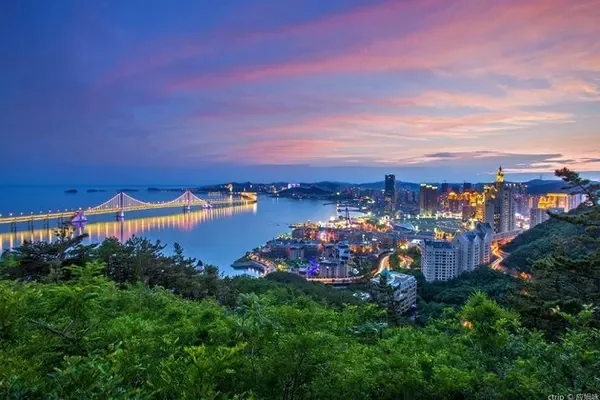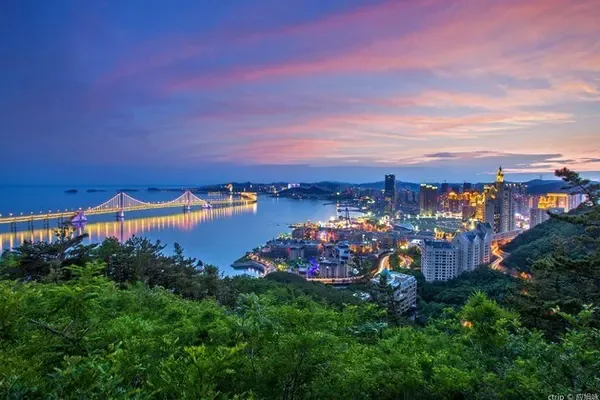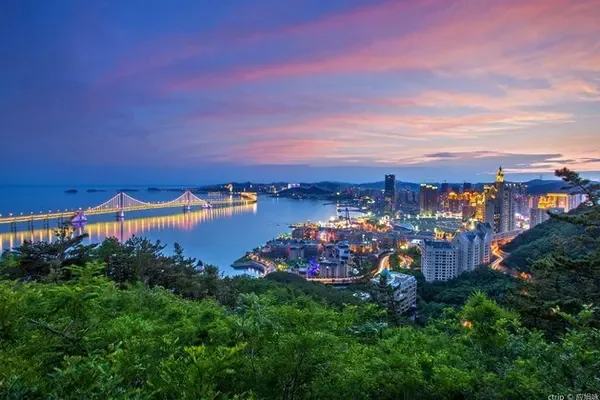I went to Dingzhou by accident, because I didn't know or even heard of this place before.
My son and daughter-in-law are going to take their grandson to the south. I want to take advantage of this free time to go to a place around Beijing to relax. When I checked the tourist attractions in Baoding, Hebei, I was attracted by the Kaiyuan Temple Pagoda for some reason, and then I learned about Dingzhou and The ancient Zhongshan country and other historical origins are entangled.
Well, right on target, that's it.
Just after two o'clock in the afternoon on the last day of November, the train I took arrived at Dingzhou Station. Before setting off, I briefly read the map of Dingzhou’s urban area and scenic spots on the Internet. I thought that it would not be much bigger than Xuanhua, which I visited not long ago, so after getting off the bus, I followed the navigation of the Gaode map in the mobile phone, leisurely He walked freely towards the Cultural Expo Park. I didn’t expect to wait until I could get a closer look at the majestic Kaiyuan Temple Pagoda. It was already sunset. After checking, this trip almost crossed the entire urban area of Dingzhou from west to east, and the journey was as long as five or six. With so many kilometers, I was a little surprised by myself.

Kaiyuan Temple Pagoda (North)
The official tourist visit started in the morning of the second day, catching up with another extraordinary moment of "smog" in the Beijing-Tianjin-Hebei region since the beginning of winter, which made the scenic spots with few tourists even more depressed and lonely. The newly built statues of ancient upright officials and government offices contain the most simple and primitive hopes and aspirations of ordinary people.

Song Dynasty appeasement envoy--Han Qi (once stationed in Dingzhou)




In the early years of Hongwu in the Ming Dynasty, in order to defend against foreign invasion, Dingzhou built the old city, demolished temples, repaired city walls, destroyed temple bells, cast weapons, and set up four gates in the east, west, south, and north. The buildings are magnificent and magnificent. However, with the passage of time and changes, today, more than 700 years later, there are only three remaining gates in the south gate of the city gate. Although it was rebuilt according to the old appearance a few years ago, the former mighty momentum no longer exists. In ancient times, there were really few city gates with three front and back gates, but this time I have gained a lot of experience.

South Gate (inside)

South Gate (middle)

Relics of the Cultural Revolution in the South Gate (middle)

South City Gate (outside)

The Kaiyuan Temple Pagoda is the tallest existing brick pagoda in China. It was first built in the fourth year of Emperor Zhenzong of Song Dynasty in Xianping, and completed in the fourth year of Emperor Renzong of Song Dynasty (1052 AD) 51 years later. The tower is 83.7 meters high and was once used as an "anticipating enemy tower" for looking out at Khitan and anticipating the enemy's situation. What makes me feel a little depressed is that this trip encountered the tower body repair period, and the gate of the tower courtyard was closed, so I had to go around its surroundings and overlook the majestic beauty from afar.

Kaiyuan Temple Pagoda (East)
Dingzhou Museum, a modern "tall" building, gathers the great achievements of local ancient and modern humanities and history, and gives a more comprehensive overview and display.






I am intoxicated among the dazzling array of exquisite and beautiful treasures and cultural relics, but I still want to applaud the predecessors who vigorously promoted civilian education in this hot land!


Dingzhou Gongyuan, first built in the third year of Qianlong in Qing Dynasty (AD 1738), is the best-preserved Qing Dynasty scientific research site in China, with a grand scale and solemn momentum.

screen wall


It is said that the left and right ancient locust trees were planted by Qianlong himself




Invigilator


Zhongshan Han Tomb is hidden in a quiet courtyard in the downtown area of Dingzhou. It has a history of more than 1700 years. The catacombs are well preserved, but the brick walls are gloomy and gloomy, which is very lonely and boring. On the contrary, the stone tablets and stone carvings displayed in the garden travel through time and space and are very interesting.






Today’s Dingzhou originated from the Zhongshan Kingdom more than 2,400 years ago. Today’s Chinese people’s understanding of the word “Zhongshan” mostly comes from the Zhongshan wolf in the novels of the Ming Dynasty, as well as the Zhongshan Park and Zhongshan (Street) Road related to Mr. Sun Yat-sen, but , this mountain is not that mountain, there should be no intrinsic relationship between them.

Dingzhou Mosque was first built in the eighth year of the Yuan Dynasty (AD 1348). Later, the kiln hall still retains part of the architectural form of the Yuan Dynasty. It is the earliest existing brick and beamless hall structure; the "Kaitian Ancient Religion" plaque hanging in the temple It is the imperial book of Qianlong. Perhaps the Muslim Hui people in Dingzhou account for a certain proportion of the total local population, and there are quite a few restaurants with Arabic Halal signboards along the street!

Dingzhou is also a place with cultural connotations. Many well-known literati have emerged since ancient times. Only the ancients I have noticed include Li Yannian, Liu Yuxi, and Cui Hu. Their works are easy to understand and popular, and have been handed down to this day. Not long ago, I recited Cui Hu's "Tiducheng Nanzhuang" and Liu Yuxi's "Autumn Ci" with my grandson. Now that I meet the poet in his hometown, I feel much closer and more comfortable.



Zhang Hanhui, known as the "people's musician", is enough to make the people of Dingzhou proud. His famous songs such as "On the Songhua River" and "Military and Civilian Production" have far-reaching influence in China and are widely circulated.

In the evening of the first day of December, I left Dingzhou by train. To sum up this trip, I have some regrets. I missed a visit to the Confucian Temple. First, I was a little tired. Secondly, the Confucian Temples all over the world are similar, lacking in personality, so I don’t want to go.
Dingzhou is still shrouded in boundless haze, but it is becoming more and more clear in my heart...
Well worth the trip!



